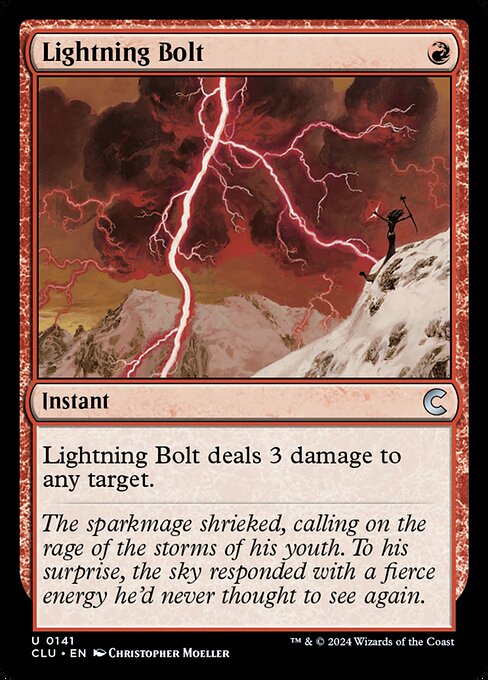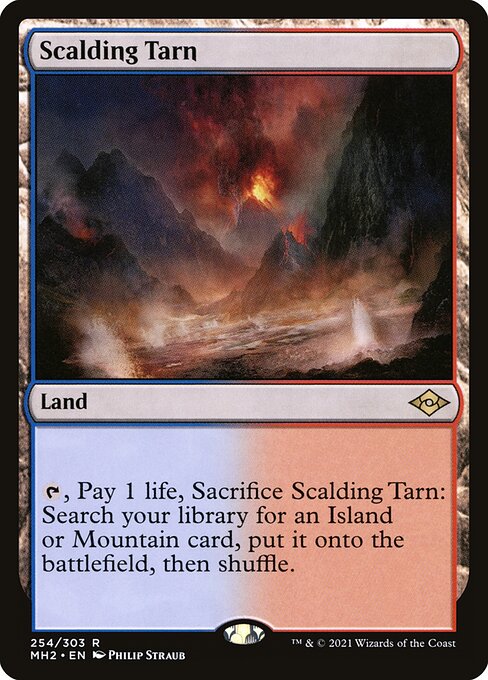Reprints are a godsend for Magic. They allow Wizards of the Coast to exploit nostalgia for long-time players and engage in tertiary myth-building by giving new generations of players the latitude to develop their own cartogenetic sentimentality. Having a rich, thirty-year history of cards to draw from when picking reprints is a huge advantage for the company, especially when many of those reprints are categorized by the community as too good to see print in a modern context.
Wizards also dodged a bullet with the creation of the Reserved List: with the most powerful cards barred from reprinting, they’re even more powerful as myths than as gamepieces. Meanwhile, they have free rein to print cards that are almost as renowned: Mana Crypt, Force of Will, Ancient Tomb, Mana Drain, Sol Ring. All these cards have as long a legacy of play (including in literal Legacy); yet they have become pillars of various formats, not cautionary tales, making them safe, but exciting, reprints.

2020 brought the most reprints the game has ever seen in a single year: not only do we have M21, but the Mystery Booster set, Double Masters, and Commander Legends. Added to that are a whole litany of auxiliary products, from Chandra’s Spellbook to Commander 2020 to Challenger Decks to Jumpstart. It’s not just the glut of products that have dropped in 2020, but the sheer volume of reprints contained within them. More than ever before, Wizards is willing to turn the steady drip of reprints into a firehose.
For two decades, Wizards used core sets to infuse Standard with reprints, adding cards to some formats and ensuring players could pick up staples they missed the first time around. They supplemented these regular reprint sets—which tended to be downplayed by tournament players and languish on the shelves and remainder bins of Books-a-Millions and comic shops across the nation—with periodic boxed sets, like Battle Royale and Deckmaster. That changed with Masters Edition in 2007, an online-only set designed to increase the supply of tournament-viable and nostalgia-heavy cards for Magic Online. That online-exclusive set was the test case for eventual physical Masters sets beginning in 2013. That era—the post-2009 “New World Order” era—brought with it a new mindset towards reprints. Wizards began releasing more specialized reprint sets, including Duel Decks, Premium Deck Series, and From the Vault; and made moves toward capturing third-party markets, with the canonization of Commander.

Masters sets sell well, and they’re comparatively easy to make. Loaded with desirable cards, they don’t require as comprehensive a design and testing process as a Standard set. Mark Rosewater admits as much when he calls Double Masters a “parachute set,” geared towards plugging a hole in the company’s schedule. Masters sets were Wizards realizing they had fertile territory to sell a format through reprints, just as the Secret Lair model allowed Wizards to sell individual cards directly to the consumer.
The Secret Lair series is a pressure valve for reprints. Cards have to adhere to a theme or a stylistic palette; but, like Masters sets, they don’t have to be balanced for Limited or Standard and there’s little design equity that they eat up. Wizards can inject a fresh supply of desirable cards into the market without diluting future sets while exploiting the human fear of missing out. Sure, you can pick up a playset of alt-art Bitterblossoms for $120 plus shipping, but if you miss the window, you’ll have to wait for the next Masters set. There have been 22 Secret Lair drops since December 2019, adding up to a full set’s worth of reprints by themselves; each has targeted a different demographic, from the Commander friendly Stargazing to the more tournament-minded Thalia set.
Secret Lairs aren’t the only innovation that 2020 brings. Back pre-pandemic, if we can cast our minds into that misty before-time, we got Mystery Booster, which was 100% reprints, many of which haven’t seen the light of day since the turn of the millennium. The supply chain failed us a bit, but there was a brief window where you could snap up extremely cheap copies of Kiki-Jiki, Mirror-Breaker,Energy Field, and Collective Brutality. Per MTGStocks, for example, Kiki-Jiki fell from $15 at release to just under $5, before spiking again with the release of Conspicuous Snoop. Tournament staples plummeted, while the equal odds of pulling any given card kept the heavy hitters from having their prices pulverized.

Summer brought Jumpstart, which had quite a few desirable reprints—Rhystic Study, Linvala, Keeper of Silence, Craterhoof Behemoth, Sheoldred, Whispering One, among others—but the bulk of the reprinted cards come from Standard-legal sets. It’s a clever way to increase the supply of M21 Planeswalkers without undercutting the sales of that set, while ensuring that the packs are still purchased by invested players, who otherwise wouldn’t be drawn to purchase a quasi-introductory product.
These are stopgaps, though. The most accessible venue for reprints is in Standard-legal sets, no argument. M21 dropped Fabled Passage from “chase rare” to “cost of a pack,” and enabled any player with the equivalent of $20 in their pocket to get their hands on Grim Tutor. Cards once printed in Commander sets, like Scavenging Ooze and Containment Priest, that spiked to $40 are now available for under $10 a playset.

This winter will bring Commander Legends, Commander Collection: Green, and Zendikar Rising, which will presumably have fetchlands in some capacity. It’s clear that the last two quarters of 2020 will be as dedicated to card access as the first half of the year, which I can’t praise enough. Quietly, while we dealt with other issues, Wizards of the Coast published the most reprinted cards of any year since the game’s inception. It’s a subtle revolution, a way to invite more players and further enfranchise those who already are invested. It mirrors Arena, with its technically free-to-play model, and it taps into the most powerful marketing tool available to Magic (or any brand)—the ability for players to emotionally invest.
No new Magic player is going to drop $100 on a copy of Force of Will; but if they open one from an impulse booster, that rush of excitement and jealousy from other players will keep them chasing that feeling. We chase the feeling we first felt when we beat a more powerful deck, when we opened that bomb rare first pack, when we slammed Sol Ring or Mana Crypt on turn one. That feeling recurs with each new reprint set, and those echoes are why we keep coming back to old territory. It feels like coming home.
A lifelong resident of the Carolinas and a graduate of the University of North Carolina, Rob has played Magic since he picked a Darkling Stalker up off the soccer field at summer camp. He works for nonprofits as an educational strategies developer and, in his off-hours, enjoys writing fiction, playing games, and exploring new beers.

